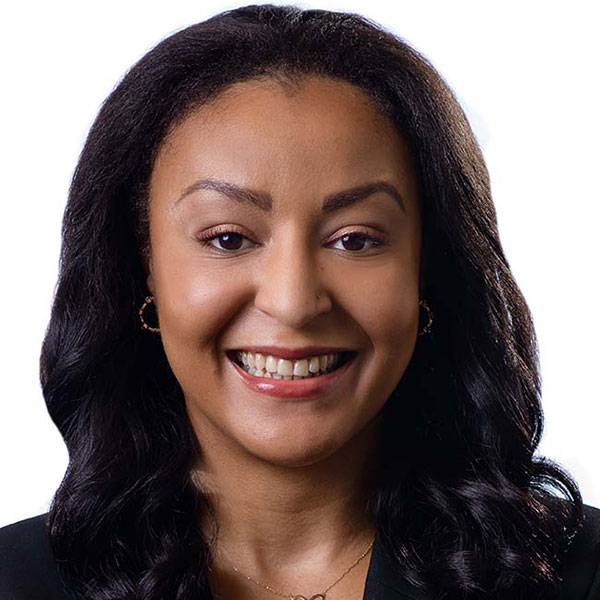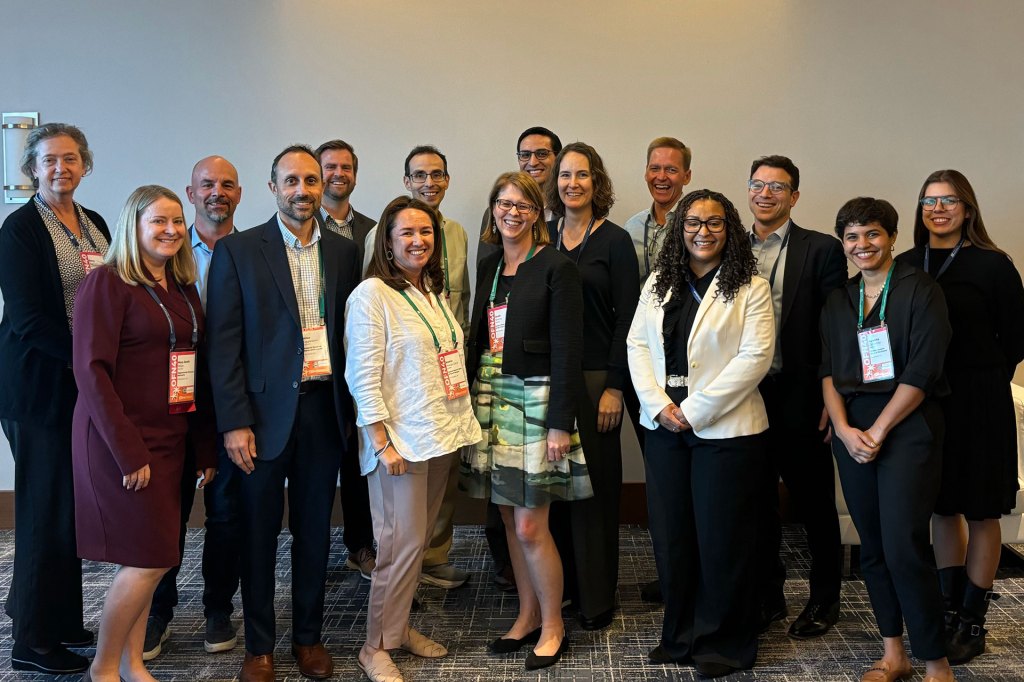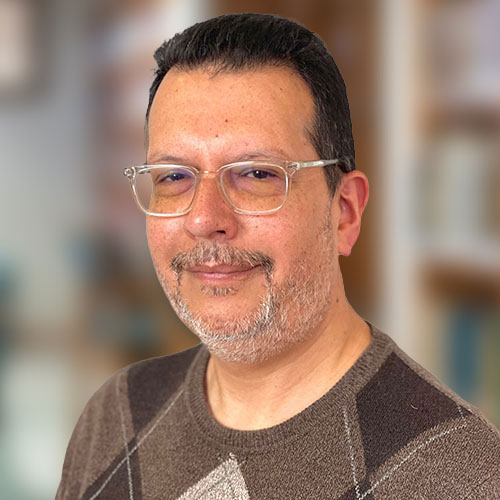Opportunity Finance Network: It takes more than money to serve the underserved
As mission-driven lenders, community development financial institutions (CDFIs) invest their funds and capacity building in underserved areas. Opportunity Finance Network (OFN) supports these unique organizations, working with the Fed to understand CDFIs’ impact.
By
, Federal Reserve Bank of Richmond

Photo by Sam Levitan Photography, OFN
A Native American couple in Anchorage, Alaska received down payment assistance to buy their first home. A refugee from Burma got a loan to renovate a restaurant in Battle Creek, Michigan. Survivors of historic floods in eastern Kentucky secured money to help repair their homes and replace damaged appliances and vehicles.
These are just a few of the people who got access to capital when they needed it most thanks to a community development financial institution (CDFI).
Households and businesses borrow trillions of dollars each quarter, but that doesn’t mean credit is equally available to all potential borrowers. CDFIs have filled these financing gaps since the 1970s by using a unique business model. First, they combine funding from a variety of sources so they can lend to people and businesses in underserved areas at lower costs for borrowers. Then, they pair that lending with additional capacity building to help borrowers make the most out of the funds.
As mission-driven rather than profit-driven organizations, CDFIs also benefit from capacity building. Opportunity Finance Network (OFN) is one major source of that support, which comes in the form of funding, knowledge sharing, and policy advocacy. In recent years, Federal Reserve Banks have partnered with this national nonprofit to better understand and uplift CDFIs in the community development space.
Building capacity through loans and information sharing
According to Dafina Williams, executive vice president, chief public policy officer and head of government affairs at OFN, some businesses and community development organizations could really use a loan but aren’t ready to borrow. “A lot of times, the goal can be to help get them to be bankable—to help graduate them into mainstream finance,” Williams said.
Capacity building could look like a CDFI helping a small business owner develop a business plan. Or it might mean providing technical assistance to a community so local leaders are ready to take on a loan. But the support doesn’t stop after the IOU is signed. CDFIs continue to assist their clients to help ensure successful completion of a project and loan repayment.
Not surprisingly, capacity building can be costly. “It doesn’t necessarily lead to profit, and you have to invest a lot in order to do it well,” said Adrienne Smith, OFN’s senior vice president of research. That’s why traditional suppliers of credit often don’t offer it.
CDFIs combine many types of funding so that they can loan safely and soundly while also providing technical assistance. “That funding can come from banks motivated by the Community Reinvestment Act,” Williams explained. “But it also can come from philanthropic partners or corporate partners, or from government.” The federal government is a key partner for CDFIs, “especially for a lot of the flexible, low-cost, longer-term capital that they really need, as well as for grants that help them build their equity and their balance sheets.”

“A lot of times, the goal can be to help them to be bankable—to help graduate them into mainstream finance.“
-Dafina Williams, executive vice president, chief public policy officer and head of government affairs, Opportunity Finance Network
Helping the helpers
OFN serves as a capacity builder for CDFIs in a variety of ways. It provides support services including research, tools, and training to its network of more than 420 CDFIs.
OFN also acts as a CDFI itself—as of September 2024, it managed over $1 billion in assets. By pooling funding and passing it through to network members in the form of grants or loans at affordable rates, members can then pass on the savings to their borrowers.
Also, investors find it easier to work with an intermediary like OFN, Williams noted. They may not have time to dig into every CDFI to understand its finances, markets, and risks. Instead, “they can work with one entity—OFN—and we can make those investments and be good stewards of their capital,” Williams added. “We know our members. We understand them.”
For example, OFN recently received a $2.3 billion grant from the US Environmental Protection Agency’s Greenhouse Gas Reduction Fund. Over the next six years, OFN will provide technical assistance and capital to its member CDFIs so that they can finance projects to reduce or avoid greenhouse gas emissions and other air pollutants in underserved communities. The intent is to deliver the benefits of clean energy, energy efficiency, and clean transportation more broadly.
Never miss a story.
How the Fed supports OFN’s work
Over the 17 years that Williams has worked at OFN, many times she’s turned to the Federal Reserve as a source of data and research.
“When we’re doing meetings on the Hill and talking about the value of CDFIs, there’s a hunger and an interest for more information and more data on where CDFIs are lending, what they’re doing, and how they’re performing,” Williams described. “It’s been really valuable to our policy and advocacy work to be able to have this growing body of research that can help us point to the actual impacts that our work is having.”
When Smith joined OFN almost three years ago, she wanted to produce more research about CDFIs and their benefits. The Fed’s researchers became integral partners in that effort. For example, Smith co-authored a summary paper with input from Mike Eggleston of the St. Louis Fed, Surekha Carpenter of the Richmond Fed, and Charlene van Dijk of the Atlanta Fed.
Over time, Williams has seen the relationship between the Fed and OFN grow and deepen. The Fed doesn’t just share information and expertise. It also gathers insights and data from OFN about their member CDFIs, which informs the research work of the Fed’s community development staff.
“The San Francisco Fed did a piece to explain CDFI loan funds’ financials to investors that might be new to loan funds,” Smith said. “Sarah Simms and Rocio Sanchez-Moyano came to us and asked for background information and how that report should be framed. So, we have Fed researchers coming to us to get a lay of the land on what the research needs are.”
Smith also shared aggregate data with Jacob Scott, Maria Carmelita Recto, and Jonathan Kivell at the New York Fed for their report on the secondary market for CDFI loans.
In addition, the Fed uses its other connections to put CDFIs in touch with the resources they need. “During the pandemic, the Fed was an excellent partner for the CDFI industry in making sure that we were able to access the capital that we needed to be able to make Paycheck Protection Program loans available for our customers,” Williams said.

“CDFIs are focused on social impact,” Smith notes. “To know whether that social impact is happening and the extent to which it’s happening requires research.“
– Adrienne Smith, senior vice president of research, Opportunity Finance Network
The CDFI Survey
A more extensive partnership between OFN and the Fed is the CDFI Survey. The Richmond Fed started the survey in 2009 to find out more about the impact of CDFIs in the Southeast.
“We recognized the public policy importance of CDFIs, as well as existing data gaps that made it challenging to answer research questions about them,” said Emily Wavering Corcoran, senior manager of regional and community analysis at the Richmond Fed. Corcoran oversaw the administration of the survey in her prior role as a senior research analyst. “The survey helped us understand where CDFIs were and were not actively filling market gaps.” The Richmond Fed also used the survey results to create a regional directory of CDFIs.
Today, Surekha Carpenter helps lead the bi-annual survey, which has been expanded nationwide and employs the resources of all 12 Federal Reserve Banks. Carpenter works with partner organizations like OFN to expand the survey’s geographic reach as well as refine its questions.
The Fed doesn’t just share information and expertise. It also gathers insights and data from OFN about their member CDFIs, which informs the research work of the Fed’s community development staff.
“We reach out to all of our partner organizations ahead of the survey so that we can get their thoughts on the kinds of questions that we’re asking and if there are any data gaps that they would suggest that we try and fill,” Carpenter said. Also, OFN and other partners help the Fed craft survey questions that make sense to CDFIs.
Smith appreciates the work the Richmond Fed puts into the design of each CDFI Survey. “Surekha and her team have come to us to get input on what each survey should focus on,” Smith noted.
The result is a wealth of insights that has spun off multiple reports. Smith recently co-authored a brief with Carpenter that looks at key findings from the 2023 survey about CDFI output and outcome measurement. “CDFIs are focused on social impact,” Smith notes. “To know whether that social impact is happening and the extent to which it’s happening requires research.” Other reports highlighted CDFIs’ innovative practices for supporting housing access and stability, and for serving consumer and small business lines.
That’s why OFN will continue to partner with the Fed in the future. At OFN’s upcoming annual conference, there will be a research symposium for the first time. Fed researchers are on the invite list “to provide their expertise and really make it a robust discussion,” Smith said. “I think there’s good interest in it, not just among ‘research nerds’ like me but among all practitioners and other stakeholders.”

Photo courtesy of Sarah Simms, Federal Reserve Bank of San Francisco






